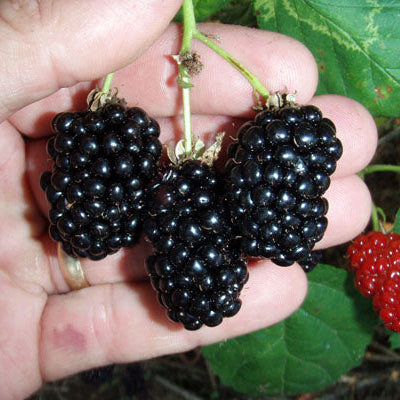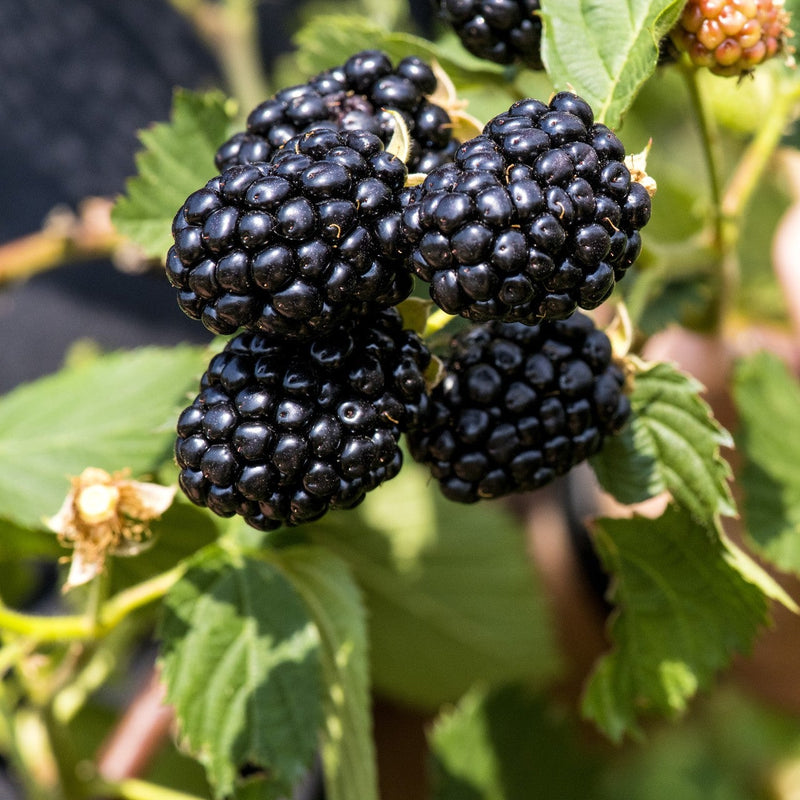Quick Overview
| Category | Details |
|---|---|
| Planting Time | Fall, Winter, or Early Spring. |
| Soil Temperature | 50 Degrees |
| Sunlight Requirements | Full Sun |
| Watering Requirements | 1-2" Per Week |
| Spacing (In-Ground) | Row: 6-8' Plants: 3-5' |
Growing Guide Details
Plant Classifications
What Variety to Choose?
When to Plant
Light & Space Requirements

Soil & Fertility
Pest & Disease Control
| Pest/Disease | Control Method |
|---|---|
| Aphids | |
| Army Worms | |
| Thrips | |
| Whiteflies | |
| Cane and Leaf Rust | |
| Leaf and Cane Spot | |
| Downey Mildew |
Irrigation & Watering Schedule

Harvesting & Storage
Sustainability & Garden Tips
FAQs
Do blackberry plants need support or trellising?
That depends on the variety: Erect varieties can typically support themselves. Semi-erect or trailing varieties need a trellis or support system to keep the canes upright and improve airflow, ease of harvesting, and fruit quality.
Can blackberries grow in containers?
Yes, but choose a dwarf or erect variety and a container at least 5 gallons in size. Make sure the pot has excellent drainage, and use high-quality potting soil. Container-grown blackberries need more frequent watering and may require staking for support.
Do I need to remove runners or suckers from blackberry plants?
Yes, especially in smaller spaces. Blackberry plants send up new canes (suckers) from the roots. While these increase yields in larger plantings, thinning them helps maintain airflow, reduce disease, and focus the plant’s energy.
How do I know when blackberries are ripe?
Ripe blackberries are fully black, plump, and come off the cane with a gentle tug. If they’re still red or resist picking, they’re not ready. Pick every 2–3 days during harvest to catch peak flavor and prevent overripe berries.
Why did my blackberries not produce fruit this year?
Possible causes include pruning at the wrong time, lack of sunlight, or planting non-fruiting first-year canes. Most varieties fruit on second-year canes (floricanes), so pruning too aggressively in winter can remove the next season’s crop.
Published on June 19, 2025
Updated on August 04, 2025



